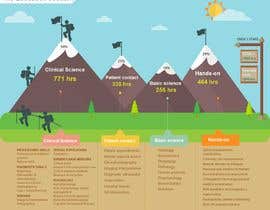Frequent Activities That Add To Back Pain And Ways To Prevent Them
Frequent Activities That Add To Back Pain And Ways To Prevent Them
Blog Article
Post Created By-Vega Landry
Preserving appropriate stance and preventing common mistakes in daily tasks can significantly affect your back health and wellness. From exactly how you sit at your workdesk to exactly how you raise hefty items, tiny changes can make a large distinction. Envision a day without the nagging pain in the back that impedes your every relocation; the solution might be easier than you believe. By making a few tweaks to your daily habits, you could be on your means to a pain-free presence.
Poor Position and Sedentary Way Of Living
Poor position and a less active lifestyle are two significant contributors to back pain. When you slouch or hunch over while sitting or standing, you put unnecessary strain on your back muscles and spinal column. This can bring about muscle imbalances, tension, and at some point, chronic back pain. In addition, sitting for long periods without breaks or physical activity can damage your back muscular tissues and bring about rigidity and discomfort.
To combat bad posture, make a mindful initiative to rest and stand up directly with your shoulders back and aligned with your ears. Bear in mind to maintain your feet level on the ground and stay clear of crossing your legs for extended periods.
Including routine extending and strengthening workouts into your day-to-day routine can also aid boost your pose and alleviate back pain connected with a sedentary way of life.
Incorrect Training Techniques
Inappropriate lifting methods can dramatically contribute to back pain and injuries. When you raise heavy things, bear in mind to bend your knees and use your legs to raise, as opposed to depending on your back muscles. Stay clear of twisting your body while training and keep the things close to your body to lower stress on your back. It's crucial to preserve a straight back and prevent rounding your shoulders while raising to stop unnecessary pressure on your spine.
Constantly examine the weight of the things before raising it. If tightness in lower back 's too heavy, ask for aid or usage devices like a dolly or cart to move it safely.
Remember to take breaks throughout raising jobs to give your back muscle mass a possibility to relax and avoid overexertion. By applying proper training techniques, you can avoid pain in the back and minimize the threat of injuries, guaranteeing your back stays healthy and balanced and solid for the long-term.
Absence of Normal Exercise and Extending
An inactive lifestyle lacking normal exercise and stretching can substantially add to neck and back pain and pain. When you do not participate in physical activity, your muscles end up being weak and inflexible, causing poor pose and raised stress on your back. Regular workout aids strengthen the muscular tissues that sustain your back, improving security and lowering the threat of pain in the back. Integrating stretching right into your regimen can additionally improve flexibility, preventing tightness and discomfort in your back muscular tissues.
To stay clear of back pain caused by an absence of exercise and extending, aim for at least thirty minutes of modest physical activity most days of the week. Include workouts that target your core muscular tissues, as a solid core can help alleviate stress on your back.
Furthermore, take breaks to extend and move throughout the day, especially if you have a desk work. Straightforward stretches like touching your toes or doing shoulder rolls can help eliminate stress and prevent neck and back pain. Focusing on regular workout and stretching can go a long way in preserving a healthy and balanced back and reducing discomfort.
Conclusion
So, bear in mind to sit up directly, lift with your legs, and stay active to stop pain in the back. By making institute for chiropractic care to your daily behaviors, you can prevent the discomfort and restrictions that feature back pain. Take care of your spine and muscles by practicing excellent posture, appropriate training techniques, and regular workout. Your back will thank you for it!
